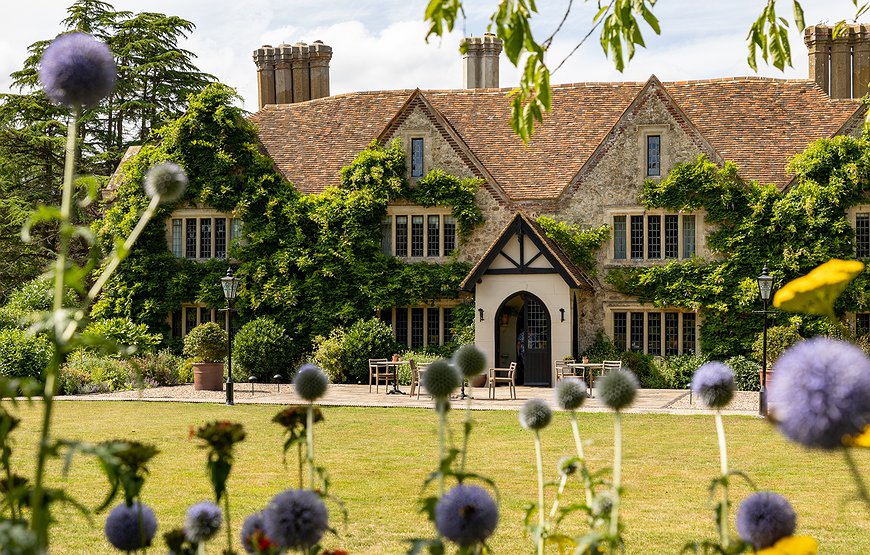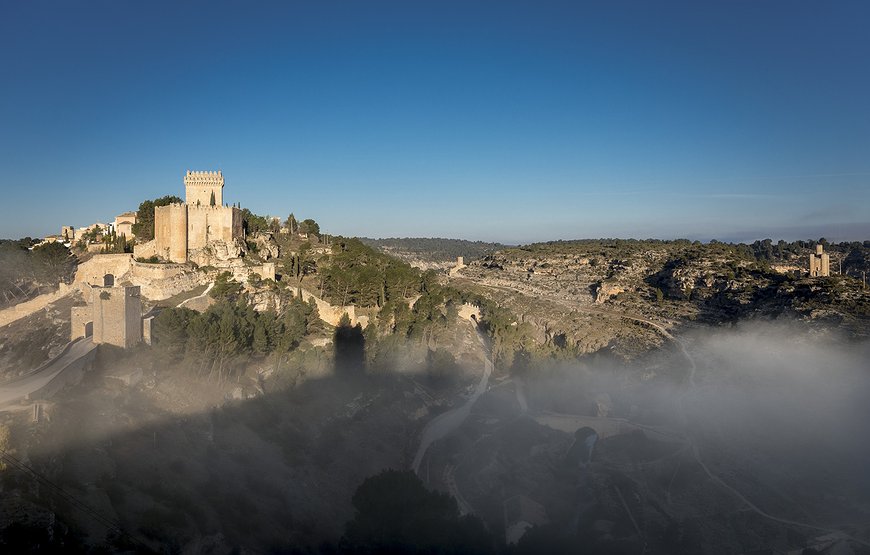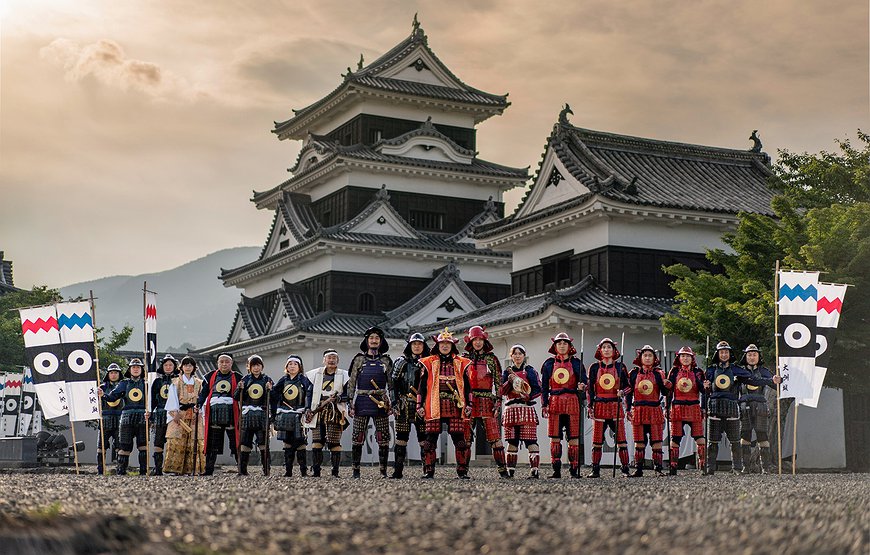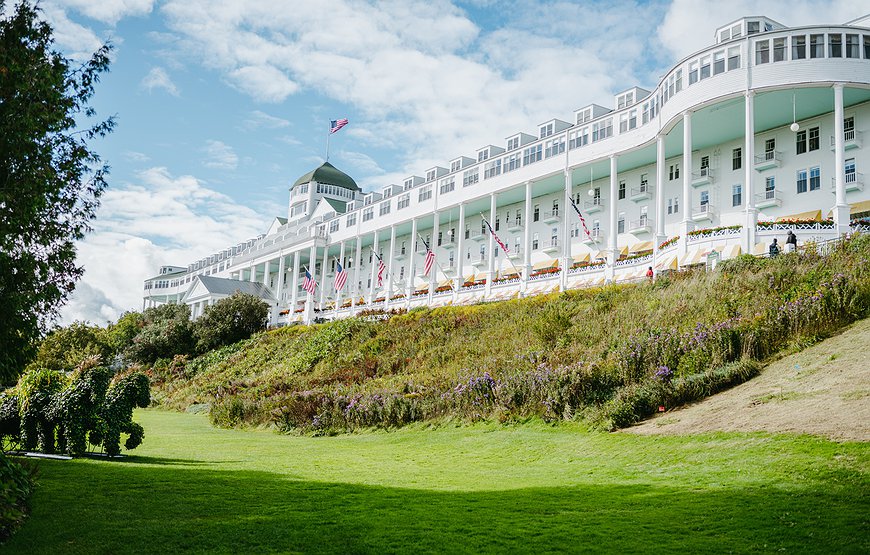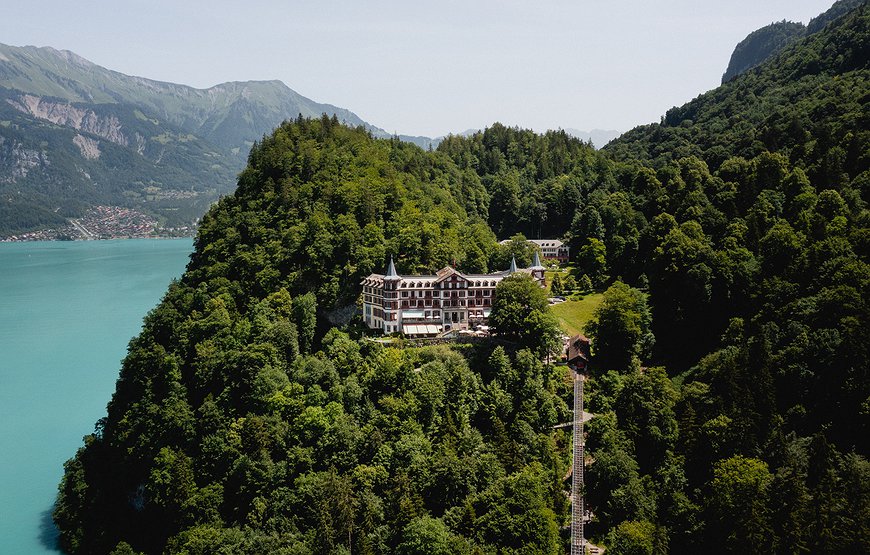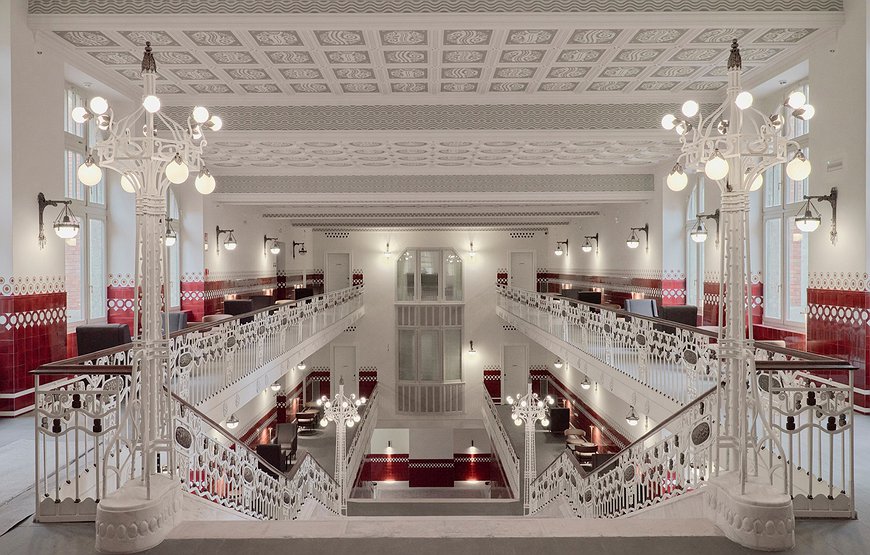
Standing a mere 20 feet from the Grand Canyon's edge, El Tovar has been perched on this precipice since 1905, when the notion of building a luxury hotel in the middle of nowhere was either visionary or mad. Theodore Roosevelt stayed here. So did Albert Einstein. The dining room still serves the same Prime Rib Hash it did decades ago, and some of the waiters have been here for over 20 years. This is not your average national park lodge.
Location

El Tovar sits directly on the South Rim of the Grand Canyon in what is now Grand Canyon National Park, Arizona. The hotel anchors the beginning of Hermit Road, a scenic route dotted with viewpoints leading to Hermits Rest.

The Bright Angel Trail, one of the canyon's most popular hiking routes, starts nearby. Grand Canyon Village's shuttle stops are steps away, and the historic Grand Canyon Railway Depot sits just 330 feet across the street.
History
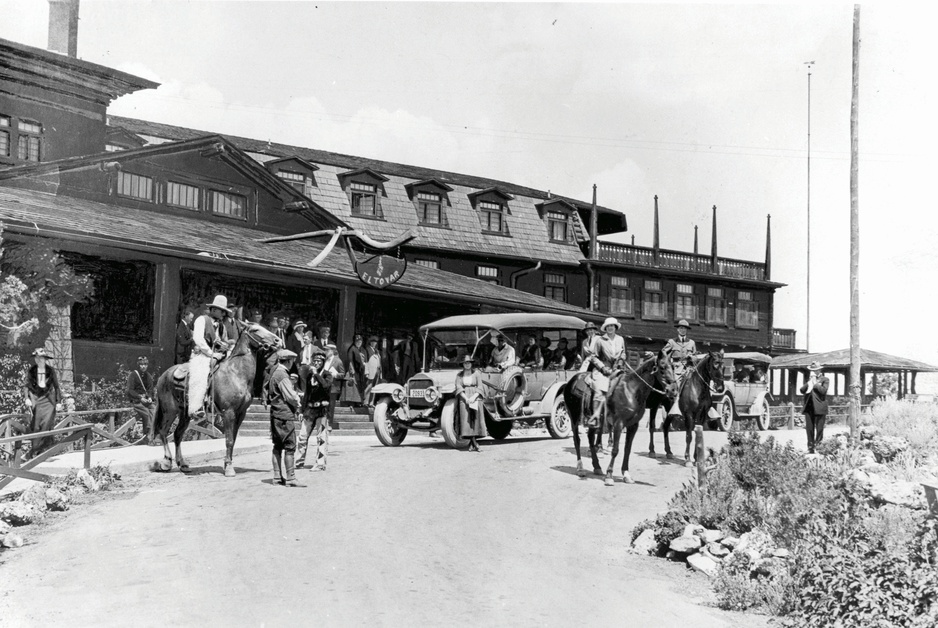
The hotel opened in January 1905, a full three years before the Grand Canyon became a national monument and 14 years before it became a national park. This timing was no accident. The Atchison, Topeka, and Santa Fe Railway had completed its Grand Canyon branch line in 1901, and the Fred Harvey Company, which ran a chain of hotels and restaurants along the railway, needed a destination resort to justify the journey.
President Roosevelt had visited the canyon in 1903 and famously urged people to leave it unmarred by buildings. The hotel was built the next year anyway. Roosevelt returned to stay at El Tovar in 1911 and again in 1913, even writing a book about his 1913 trip. Make of that what you will.
The project cost $250,000, making it the most elegant hotel west of the Mississippi River at the time. The Santa Fe Railway initially planned something smaller but expanded the design as Grand Canyon traffic increased. Rather than call it the Bright Angel Tavern, they followed the Harvey House tradition of Spanish names and settled on El Tovar, honoring Pedro de Tovar, who had reported rumors of a large river in the area that inspired García López de Cárdenas to become the first European to see the canyon.
The hotel received National Historic Landmark status in 1987 and joined Historic Hotels of America in 2012. It remains one of the few Harvey House facilities still in operation.
Architecture

Chicago architect Charles Whittlesey designed El Tovar as a hybrid between a Swiss chalet and a Norwegian villa, an appeal to early 20th-century American elites who considered European culture the height of sophistication. The result is wonderfully eclectic: local limestone and Oregon pine construction, log walls on the lower floors transitioning to lighter framed construction above, and Swiss-inspired cutout wood railings colliding with Mission style elements and southwestern motifs.
The building varies in height across its wings – two stories in the center, three in the north wing, and four in the south, following the sloping terrain. A turret with a pyramidal roof tops the lobby, which rises four stories. The north wing extends almost to the canyon's edge, ending in a porch with views into the abyss. Cedar-shingled roofs complete the rustic profile.
Inside, peeled log posts varnished dark brown frame the central lobby rotunda. Early promotional materials described a breakfast room "tastefully decorated in fifteenth-century style," though much of the original decor has given way to greater emphasis on southwestern themes. The Arts and Crafts furniture pieces have largely been replaced or dispersed. What remains is National Park Service Rustic architecture before that style even had a name.
The Dining Room

The Dining Room from the outside
The El Tovar Dining Room is constructed from the same native stone and Oregon pine as the rest of the hotel, positioned perpendicular to the rim with canyon views through its windows. Murals depicting the customs of the Hopi, Apache, Mojave, and Navajo tribes decorate the walls. The ambiance splits the difference between rustic and refined.
The menu leans traditional with southwestern influences. Signature dishes like the Prime Rib Hash at breakfast and the Salmon Tostada at dinner have been menu fixtures for decades. The service staff includes professionals who have worked here for over 20 years, an eternity in the restaurant industry. The Wine Spectator has recognized the establishment, and it is Green Restaurant Certified. Dinner reservations open 30 days in advance and are essential – window tables may require a wait, but the views justify the patience.
The adjacent lounge offers a more casual setting with paintings by local canyon artists. The small veranda outside provides prime sunset viewing territory.
Lobby
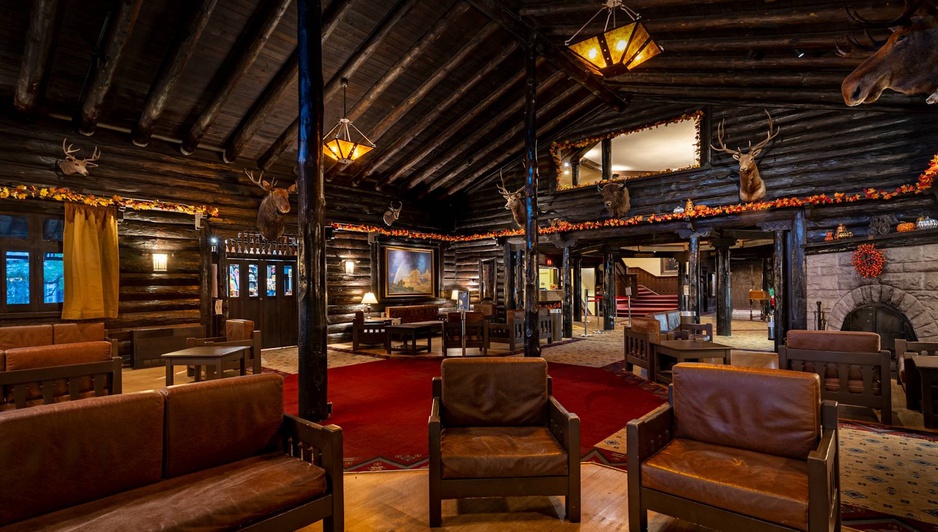
Lobby
The central lobby features the collision of architectural styles that defines El Tovar. Swiss-inspired railings, southwestern-pattern carpets, and dark varnished log posts create an atmosphere that somehow works.
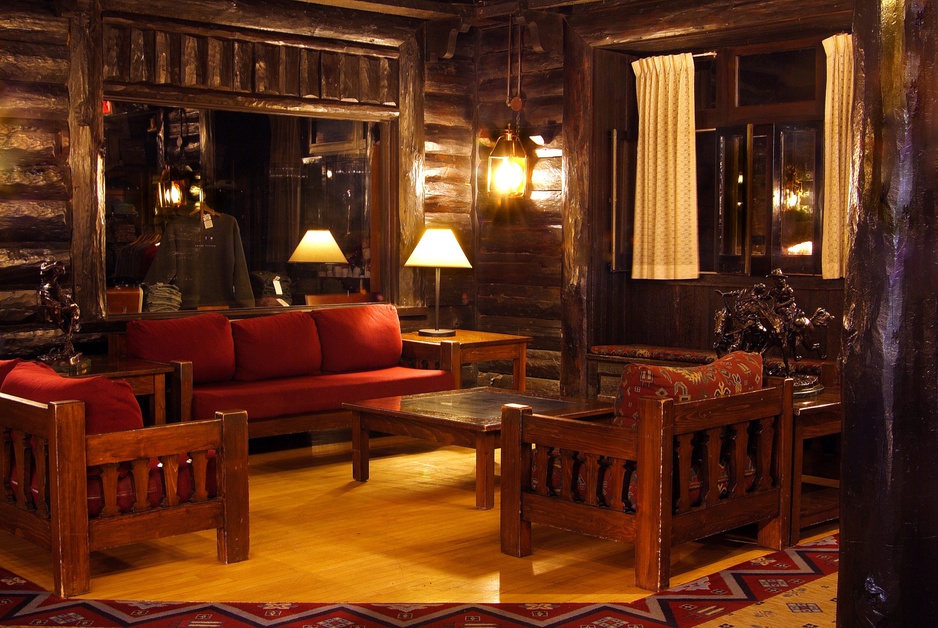
Open fires and comfortable seating make it a natural resting place after a day navigating the canyon trails. A balcony area provides space for games or puzzles before dinner. The ground floor includes a gift shop and newsstand.
The Rooms
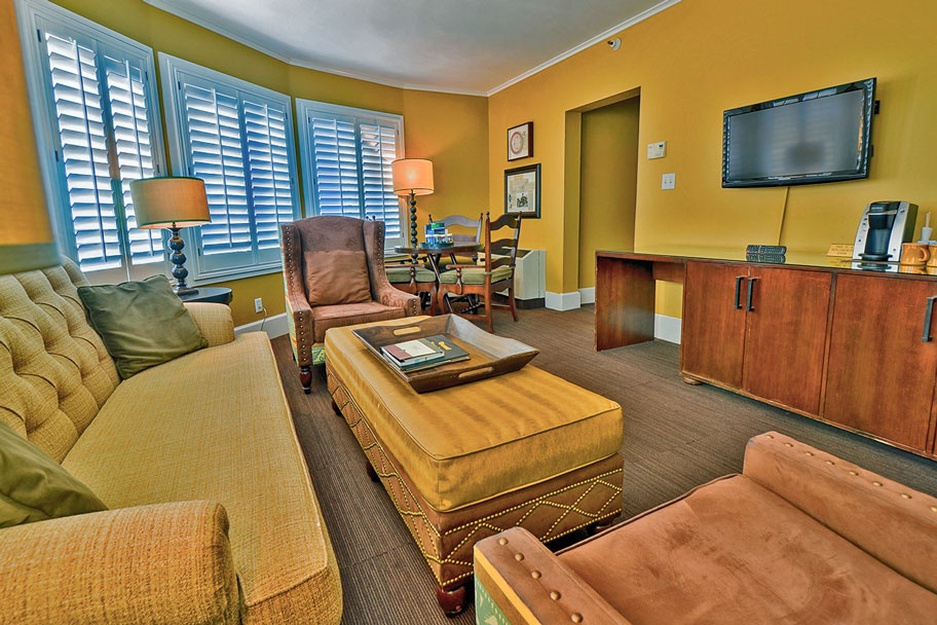
Santa Fe Suite's sitting room
El Tovar has 78 rooms, down from the original 103 after a 1983 renovation that added private bathrooms to every room. No two rooms are identical, a consequence of the building's historic nature and irregular layout. Standard rooms come with configurations ranging from one double bed to one king bed.
Deluxe rooms offer either one queen, one king, or two queens. The 12 suites each have unique names, identities, and decor – the Zane Grey Suite includes an attached sitting area, balcony, and wall art specific to the author. Several suites feature porches or balconies, some with canyon views.
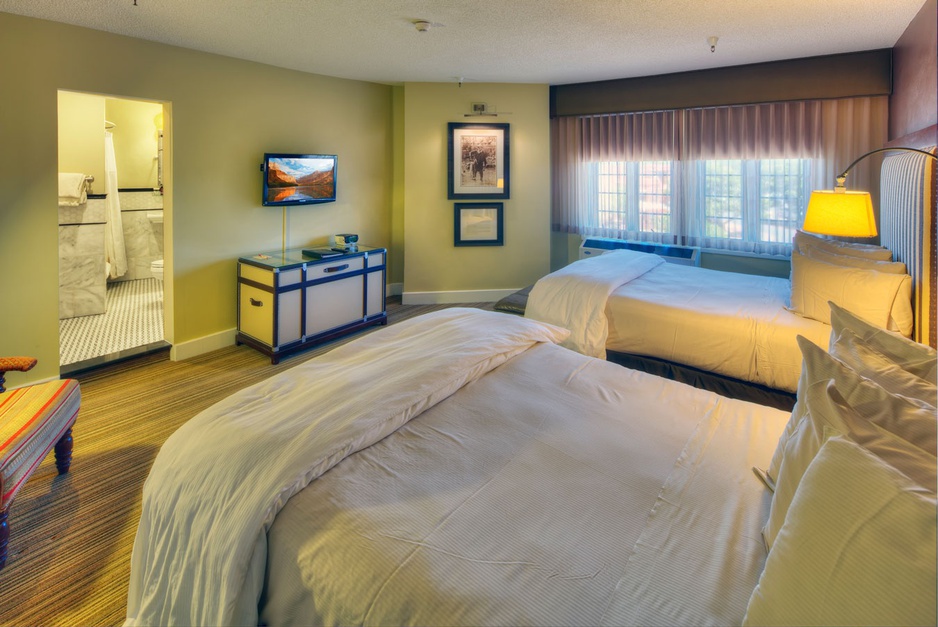
Zane Grey Suite
All accommodations include satellite TV, safe, telephone, hair dryer, full bath, coffeemaker, and air conditioning. There are no microwaves or elevators. You access all rooms by stairs. Bell service is available, and in-room dining covers breakfast and dinner. Rollaway beds can be added to many rooms for an additional charge.
Rooms open for booking 13 months ahead and sell out rapidly. Canyon-view rooms require specific requests.
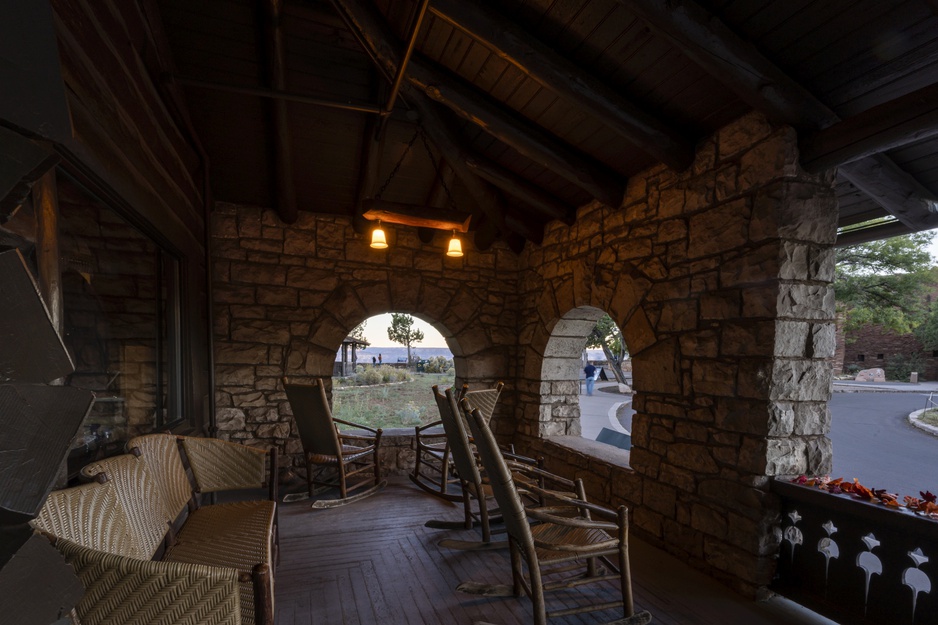
The front porch, with its rocking chairs and canyon views, is ideal for watching the sunrise or spotting elk grazing on the lawn.
Activities and the Depot
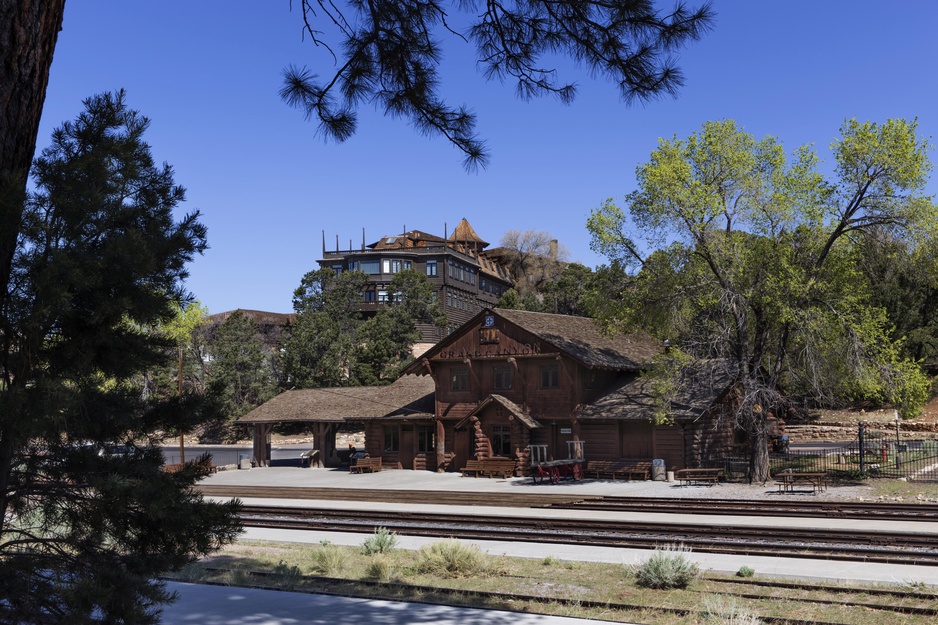
Grand Canyon Depot - railroad station
The hotel's concierge arranges mule rides, ranger programs, and sunset tours. Free ranger talks are held on the front porch during summer evenings. Elk often graze on the lawn at sunrise. The Village shuttle system stops at the hotel entrance, making a car largely unnecessary once you arrive.
The Grand Canyon Depot across the street deserves attention in its own right. Designed by architect Francis W. Wilson and completed in 1909–10, it is one of only three remaining railroad depots in the United States built primarily with logs. Wilson created the only log structure of his career here, using materials that echoed El Tovar while paying superior attention to construction detail. The two-and-a-half-story building features a broad gabled roof, log construction on the first floor, and frame construction for the second story, which includes a small apartment where the station agent once lived.
The depot served passengers until 1968, sat dormant until the National Park Service acquired it in 1982, then returned to service in 1989 when the Grand Canyon Railway was revived as a tourist line running from Williams, Arizona. It received National Historic Landmark status in 1987, the same year as El Tovar. Original hardware stamped "GC" remains throughout the interior.
1 El Tovar Rd, Grand Canyon Village, AZ 86023, United States


